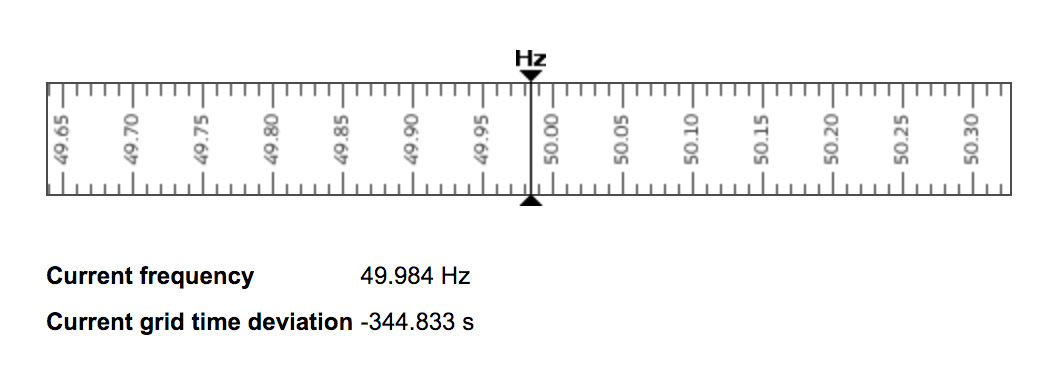
Yesterday I heard on the news that clocks in Europe have started to lag behind on the official time. The culprit is a fluctuation in Europe’s electricity grid. Clocks, like the ones in your microwave, that are reliant on Grid Time are affected by these fluctuations:
Grid Time is a time measurement which is based on the standard grid frequency of 50Hz in Europe. Fifty oscillations in alternating current equate to one second of grid time. Frequency fluctuations lead to deviations in grid time. If the frequency is lower than 50Hz, the fifty oscillations last slightly longer. If, on the other hand, the frequency is higher than 50Hz, the fifty oscillations are shorter. Since one second of grid time always constitutes precisely fifty oscillations, the grid seconds therefore last slightly shorter or longer depending on the frequency.
Due to a disruption of the power system originating in Serbia/Kosovo since mid January 2018, a total of 113GWh of the energy production in Europe has been missing. Electrical generators in other European countries had to do more work, as they tried to cover this loss. This however has some side-effects:
The electrical generators of an electricity grid rotate more readily and faster when consumption is low. Consequently, they rotate with a higher frequency. Conversely, the electrical generators rotate more laboriously and with a lower frequency when consumption is greater.
With Europe’s grid running at a frequency slightly slower than 50Hz, Grid Time has started to drift off. This is known as Grid Time Deviation:
The Grid Time Deviation is calculated by comparing Grid Time with UTC time (coordinated universal time), which is determined using highly precise atomic clocks.
Ever since mid January 2018 this Grid Time Deviation has been building up. At the time of writing Grid Time Deviation is about -5 minutes (e.g. clocks are lagging behind by 5 minutes). You can check the Grid Frequency and Grid Time Deviation yourself on Swiss Grid’s frequency page:

Grid Time Drift, dd 2018-03-07
Usually the maintainers of the electricity grid adjust the frequency to keep Grid Time in sync with UTC:
The Grid Time Deviation is constantly balanced out. If the time deviation is more than twenty seconds the frequency is corrected in the grid. In order to balance out the time deviation again the otherwise customary frequency of 50 Hz (Europe) is changed as follows:
- 49.990 Hz, if the grid time is running ahead of UTC time
- 50.010 Hz, if the grid time is lagging behind UTC time
This time however they can’t keep up, as 113GWh is a huge amount of energy. Thankfully it didn’t drop below 47.5Hz, because then we’d be having blackouts.
Consider donating.
I don’t run ads on my blog nor do I do this for profit. A donation however would always put a smile on my face though. Thanks!